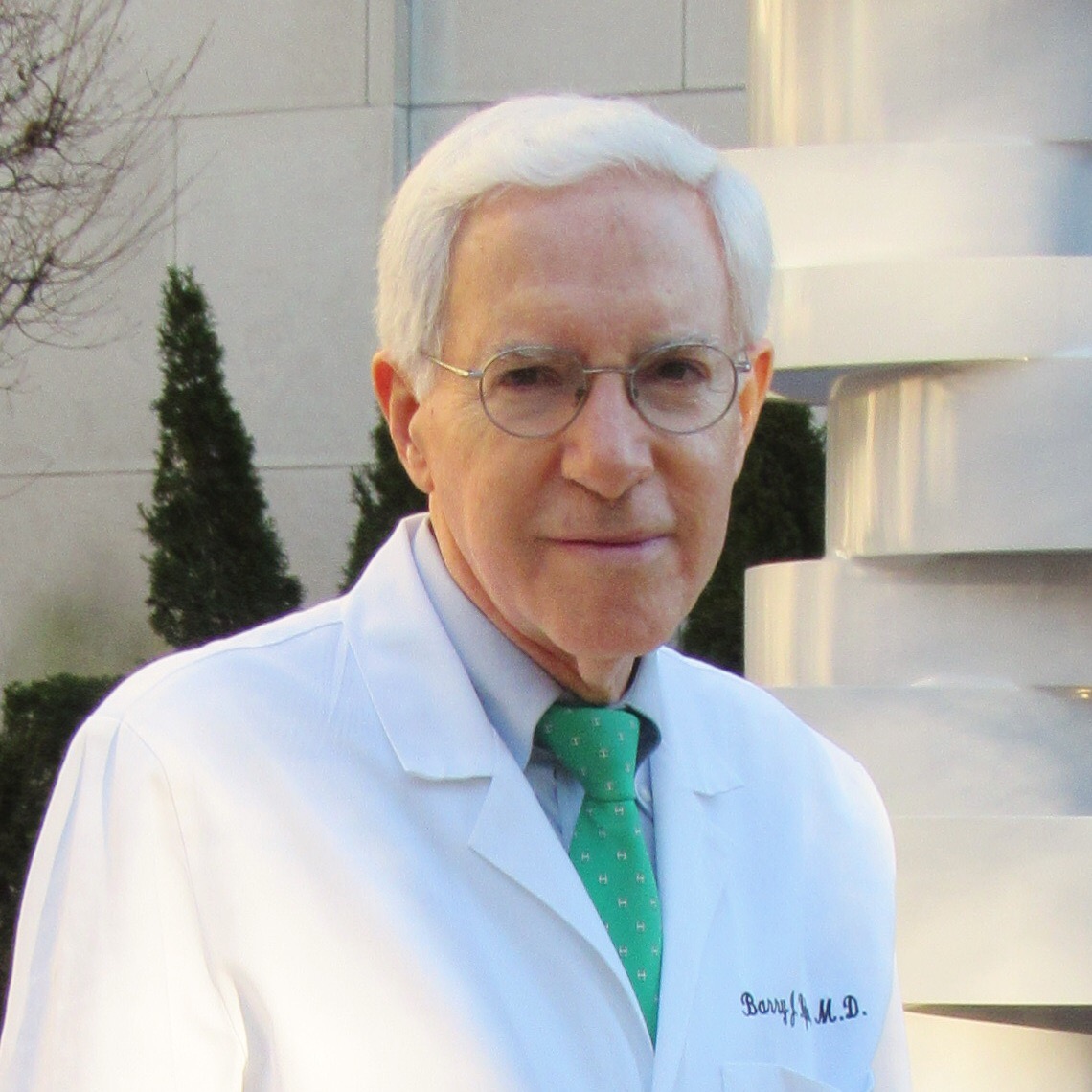Dr. Barry J. KLYDE
NYCEndocrinologist.com







Academics
Doctor of Medicine, Stanford University School of Medicine
Medical Scientist Training Program, Stanford University
Bachelor of Science, Biochemistry, Cornell University
Internship & Residency
New York-Presbyterian Hospital/Weill Cornell Medical Center
Fellowship in Endocrinology and Metabolism: Joint program at New York-Presbyterian Hospital/Weill Cornell Medical Center and Rockefeller University
Fellowship in Tropical Medicine, Louisiana State University
Board Certification
American Board of Internal Medicine, Endocrinology and Metabolism
Board of Medical Examiners of the State of California, Physician's and Surgeon's Certificate,
The University of the State of New York, Practice License in Medicine and Surgery
Castle Connolly Top Doctors: New York Metro Area (book series): 18th Edition, 17th Edition, 16th Edition, 15th Edition, 14th Edition, 13th Edition, 12th Edition, 11th Edition, 10th Edition, 9th Edition, 8th Edition, 7th Edition, 6th Edition, 5th Edition
Castle Connolly Top Doctors: New York Metro Area (digital guide): 2021, 2020 2019, 2018, 2017, 2016
New York Magazine: Top Doctors: 2025, 2024, 2023, 2022, 2021, 2009
New York Super Doctors: 2025, 2024, 2023, 2022, 2021, 2020, 2019, 2018, 2017, 2016, 2015, 2014, 2013
Westinghouse Science Talent Search, Second in Nation, 1966
New York Board of Education, Navy Award, First Prize, 1965
Persistence of an Introduced Lethal in a Feral House Mouse Population, The American Naturalist
After discovery of a wild house mouse population free from variant alleles at locust T (Dunn, Beasley and Tinker, 1960), males heterozygous for a lethal allele at this locus were introduced into it. Since the population is on an uninhabited island (Great Gull Island in Long Island Sound) approachable only by beaching a small boat, it is probably effectively isolated from other mouse populations. An opportunity is thus offered by this population for testing certain assumptions about the evolutionary dynamics of the polymorphism at T-locus which is commonly found in feral mouse populations.
Selection in Mice For Change in Viability of a Semilethal Genotype at the T Locus, Journal of Heredity
Lethal alleles at the T locus have been found in almost every wild mouse population studied. The properties of these recessive alleles (t alleles) suggest that they are coromosomal aberrations tather than point mutations. The many alleles can be divided into five groups using as criteria the syndrome of abnormalities in homozygotes, the degree of distortion of the male transmission ratio in heterozygotes, the extent of the reduction of recombination near the T locus, and the additional test of complementation. The degree of complementation between the two alleles is ascertained by determining the viability of the heterozygote.
Purification of chicken liver seryl transfer ribonucleic acid by complex formation with elongation factor EF-Tu:GTP, Biochemistry
The interaction of chicken liver AA-tRNA with Escherichia coli elongation factor EF-Tu-GTP was studied. Formation of the ternary complex, AA-tRNA-EF-Tu-GTP was quantitative and the complex participated in polynucleotide-directed but not triplet-directed ribosomal binding. The complex was isolated free of nonacylated tRNA by chromatography on Sephadex G-100. Ser-tRNA isolated as a ternary complex had an average purity greater than 78% and could be directly fractionated into isoaccepting species by chromatography on benzoylated DEAE-cellulose. The purification procedure utilizes small amounts of tRNA (0.5-15nmol of AA-tRNA) and is rapid, quantitative, and reproducible. Results with Leu-, Lys- and Phe-tRNA indicate that the procedure may be used with other AA-tRNAs.
Rate of Serine Transfer Ribonucleic Acid Synthesis During Estrogen-Induced Phosphoprotein Synthesis in Chick Liver, Biochemistry
The estrogen-induced hepatic synthesis of the yolk phosphoprotein, phosvitin, in roosters is accompanied by a 25% increase in the serine acceptance of hepatic tRNA which is limited to two serine isoacceptors and not dependent on AA-tRNA synthetase (P. H. Maenpaa and M. R. Bernfield, Biochemistry 8, 4926 (1969). In chicks, estrogen is now shown to cause a similar increase in the concentration of hepatic Ser-tRNA as well as changes in the acylation of other tRNA species during phosvitin induction. To determine whether the change in Ser-tRNA level is due to a specific increase in synthesis, the rate of tRNA^Ser synthesis relative to the rate of total tRNA synthesis in hormone-treated chicks was compared to that in control chicks. The relative synthetic rate was determined by a bouble-label method in which nonspecific effects of the hormone were avoided. The incorporation of [3H]- and [14C]orotic acid, over a brief period in vivo or in liver slices, into purified tRNA^Ser from estrogen-treated and control birds was compared to the incorporation into unfractionated tRNA from these birds. No appreciable change in the relative rate of tRNA^Ser synthesis was found during a period when the level of Ser-tRNA continued to increase. Kinetic analysis of the data suggests that mechanisms other than increased synthesis are responsible for the increased serine acceptance of hepatic tRNA during estrogen-induced phosvitin synthesis. Several possibilities are discussed, including a decrease in degradation rate or an estrogen-evoked specific tRNA modification.
Isotopic Labeling of DNA in Rat Adipose Tissue: Evidence for Proliferating Cells Associated with Mature Adipocytes, Journal of Lipid Research
The intraperitoneal administration of [3H]thymidine to adult rats resulted in the rapid appearance of label in the adipocyte fraction of collagenase digests of adipose tissue. Low-speed centrifugation followed by freezing and slicing showed the label to be uniformly distributed in the adipocyte fraction. The presence of label in DNA was confirmed by hydrolysis with deoxyribonuclease and by inhibition of incorporation with hydroxyurea. Organelle fractionation revealed that the label was predominantly in nuclei, and radioautography showed that only a few adipocyte nuclei were labeled. The label in the adipocyte fraction could not be reduced by increased collagenase digestion or by trypsin treatment. Mixing of labeled adipocytes with unlabeled stroma did not result in decrease of label and addition of labeled stroma to unlabeled adipocytes did not cause significant transfer of radioactivity. Addition of [3H]thymidine to the collagenase digestion medium of unlabeled adipose tissue resulted in more incorporation by adipocytes than by stroma, suggesting the presence of a very rapidly proliferating cell type associated more with adipocytes than with stroma. In vivo turnover studies of labeled DNA indicated that there are two components in both adipocytes and stroma, a rapidly labeled component with a half-life of only several days and another with a half-life of several months. These experiments suggest that there is a rapidly proliferating cell type in adipose tissue, closely associated with mature adipocytes, that may be an adipocyte progenitor or may have some other unknown function.
Increased Cellular Proliferation in Adipose Tissue of Adult Rats Fed a High-Fat Diet, Journal of Lipid Research
The feeding of a high-fat diet to adult rats was shown to increase the incorporation of [3H]thymidine into DNA of the adipocyte and stromal fractions. After only 2 days on a high-fat diet there was a marked increase in the incorporation of label. When a 2-week period was interposed between [3H]thymidine administration and determination of DNA specific activity, the greatest increase in incorporation of label was found after 1 week on the diet, when incorporation increased 6-fold or more in both adipocytes and stroma and subsequently decreased to stabilize at a level two or three times that of chow-fed rats in the adipocyte fraction. Rats labeled when young and later placed on a high-fat diet showed a decrease in DNA specific activity in both adipocytes and stroma, confirming that cellular proliferation had occurred in both fractions. The specific activities of both stromal and adipocyte DNA were very similar at all time points studied. An attempt to increase the difference in specific activities by waiting many weeks after [3H]thymidine injection before isolating DNA was not successful. This may be because the total amount of DNA in the stromal and adipocyte fractions increases in parallel on the diet. The significance of these findings in terms of the normal turnover of adipose tissue DNA and the responsive- ness to diet is discussed
Male Sexual Dysfunction and Diabetes Mellitus: Multidisciplinary Approach to Diagnosis and Management, New York State Journal of Medicine
Reviews sexual function complications of diabetic men with respect to erection, ejaculation and libido, and fertility, and discusses a multidisciplinary approach to their management and control that involves participation of the family physician, a urologist, and a sex counselor/psychiatrist. A case history of a 52-yr-old diabetic psychologist and sex therapist is presented to illustrate how, after S's sexual dysfunction failed to improve after extended medical and dietary management of his diabetes and after psychotherapy and psychoanalysis, penile prosthetic implantation was successful in allowing S to engage in satisfactory sexual intercourse.
Diabetes-Related Impotence in the Elderly, Clinics in Geriatric Medicine
A multidisciplinary approach to diagnosis and treatment of impotence in the elderly diabetic man is highly desirable because of such impotence’s numerous causes, the frequent necessity for detailed diagnostic procedures, and the various treatment modalities and management alternatives available. Today, almost every older man with diabetes and impotence can obtain sexual gratification with penile vaginal intercourse if he is motivated and offered current alternative treatment modalities. Those who do not wish such treatment should be informed of alternative methods of sexual gratification.
Diagnostic Evaluation of Impotence, Journal of Postgraduate Medicine
Establishing the cause of impotence can be a complicated process. The disorder may include neurogenic, vasculogenic, psychogenic, and hormonal factors or be the result of penile trauma or an intercurrent medical condition. The authors describe how to identify the specific cause using history taking, physical examination, and noninvasive and invasive testing.
Treatment Alternatives for Impotence, Journal of Postgraduate Medicine
Methods of treating impotence are as varied as the causes. Often, more than one method is needed to address multiple problems. The authors describe the use of sex therapy and psychotherapy to relieve psychogenic dysfunction. They thoroughly review management of organic problems with pharmacologic treatment, arterial surgery, implantation of a penile prosthesis, or use of an external device.